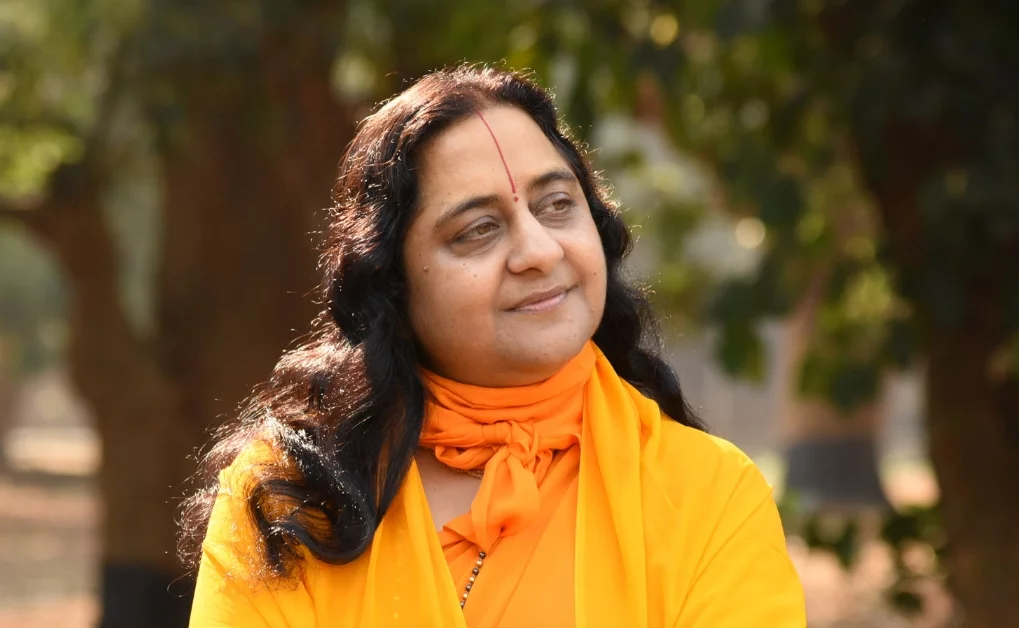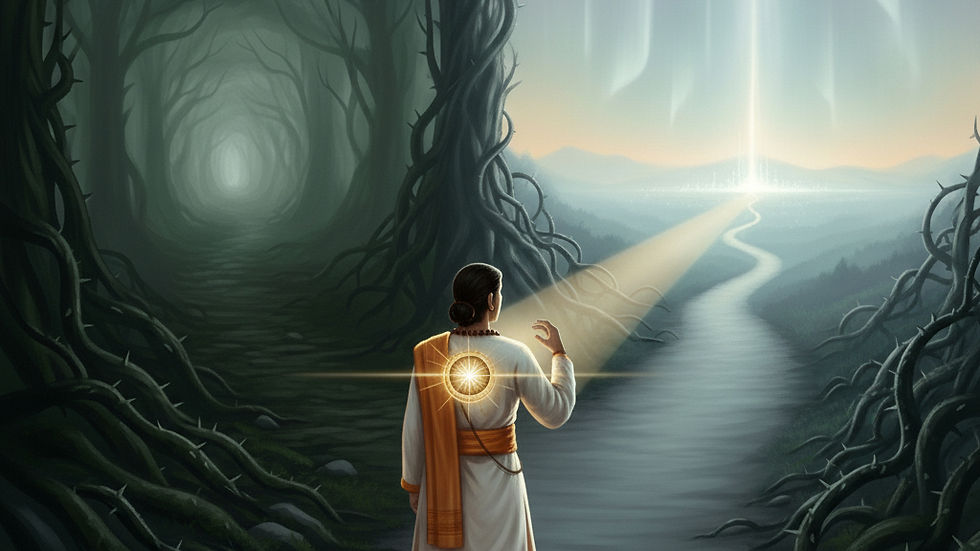The Soulful Touch: How Arts and Culture Shape a Meaningful Life
- H.H. Raseshwari Devi Ji

- Aug 2
- 4 min read
Updated: Sep 11

Introduction: Why We Need to Talk About This Now
In a fast-paced world filled with deadlines, distractions, and digital noise, we often find ourselves running without asking why we’re running. Somewhere amidst this rush, we tend to forget the very essence of living — the beauty, the expression, the connection — the soul of life itself. That soul, I believe, lies in arts and culture.
This is not just about appreciating music or visiting museums. Arts and culture have been the invisible threads holding our emotions, values, and communities together — both as individuals and as a society. As someone who has witnessed how rhythm, color, story, and tradition breathe life into hearts, I feel compelled to reflect on their profound contribution to our journey as human beings.
The Essence of Arts in Daily Life
Art is not just a painting on a wall or a classical raaga. It is the expression of the human soul. From the tribal chants of ancient civilizations to the digital illustrations of today, art captures our emotions, expresses our identities, and heals our hearts. Think of a time when a song made you cry or a dance lifted your spirit — that wasn’t just entertainment; that was transformation.
According to a study published by the World Health Organization, participation in the arts contributes to the prevention and treatment of mental health issues. In other words, engaging with art is not optional for a fulfilled life — it is essential.
Culture: The Living Legacy of Human Values
Culture is not static. It is a living, breathing force that evolves with us — our language, rituals, festivals, dress, and even food.
When we pass down lullabies, celebrate festivals, or tell ancient stories to children, we aren’t just filling time — we are transferring wisdom, moral values, and identity across generations. Culture gives us roots while allowing us to grow.
The UNESCO World Report on Cultural Diversity highlights that societies with strong cultural identities are more resilient and unified during crises. In today’s fractured world, this makes cultural engagement not a luxury but a necessity.
The Numbers Tell a Story Too
92% of people reported a positive mood shift after engaging in creative activities (American Journal of Public Health).
Over 30 million people in India are directly or indirectly employed in cultural and creative industries.
Nations that invest in arts and culture see higher levels of civic engagement and innovation (Brookings Institution).
These numbers reminderus that art and culture are not luxuries. They are lifelines.
How Arts and Culture Elevate Us Spiritually and Socially
When you sing a bhajan, you’re not just using your voice — you’re aligning your heart with divine rhythm. When you wear your traditional attire, you’re not just dressing up — you’re honoring your ancestors. When you paint, dance, write, or cook a family recipe — you’re healing yourself.
As someone deeply connected with thousands of seekers and souls over the years, I’ve observed that people who engage with art and tradition experience deeper peace, empathy, and self-respect.
Culture makes us inclusive. Art makes us expansive. And together, they make us human.
Conclusion: Let’s Not Lose the Soul of Life
In the pursuit of progress, let us not forget what makes life worth living.
Our technologies may grow smarter, but it is our art that makes us wise. Our economies may expand, but it is culture that makes our hearts open, soft, and rooted.
Let us raise children who know how to sing and code. Let us build societies that value both GDP and Geet (song). Let us strive for a world where humans are not just efficient — but also enlightened.
Because when we lose touch with art and culture, we don’t just lose tradition — we lose the flavor of life itself.
As the Taittiriya Upanishad reminds us:
"Raso vai saḥ. Rasaṁ hy evāyaṁ labdhvā ānandī bhavati."
The Divine is the very essence of beauty and bliss. One who realizes this rasa becomes truly joyful.
May we never lose that rasa — that divine flavor that art and culture bring to our lives.
May our stories continue to sing, our colors continue to dance, and our lives remain rich with meaning.
With folded hands and a heart full of hope,
Radhe Radhe
– Raseshwari Devi Ji
Further Reading:
(Social Role: Relationships, Education, Contribution)
“मानव जीवन में शिक्षा का महत्व” (The Importance of Education in Human Life)
“मानव जीवन में योग और स्वच्छता की भूमिका” (Role of Yoga and Cleanliness in Human Life)
“मानव जीवन में कला और संस्कृति का योगदान” (Contribution of Arts and Culture in Life)
“समाज सेवा: मानव जीवन की सच्ची पूर्ति” (Social Service: The True Fulfillment of Human Life)
“स्वस्थ शरीर में ही आध्यात्मिकता का विकास संभव है” (A Healthy Body Is Essential for Spiritual Growth)
“प्रकृति संरक्षण के बिना मानव जीवन अधूरा है” (Human Life Is Incomplete Without Nature Conservation)
FAQs: What People Often Ask
Q1. Is art only for artists?
Absolutely not. Art lives in the doodles you make while thinking, the way you decorate your home, or the rhythm in your footsteps. Everyone is an artist at heart — it just needs expression.
Q2. Why should we care about culture in a modern world?
Because without culture, we become rootless. Culture provides meaning beyond machines and metrics. It’s not just who we are — it’s why we are.
Q3. How can we integrate arts and culture into busy lives?
Start small: Listen to a soulful song during your commute. Read a poem at night. Join your community’s festival. Support a local artisan. Life will feel richer almost instantly.
Q4. What’s the link between spirituality and art?
Art is the language of the soul. Whether it’s devotional music, temple architecture, or dance forms like Bharatnatyam — they all become bridges that carry us closer to the divine.





















Comments